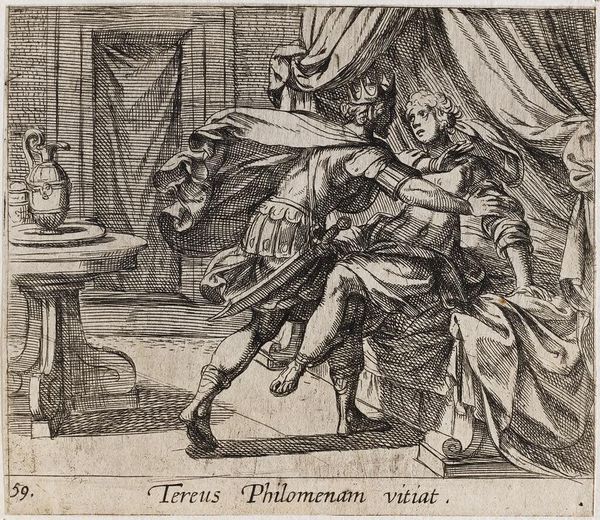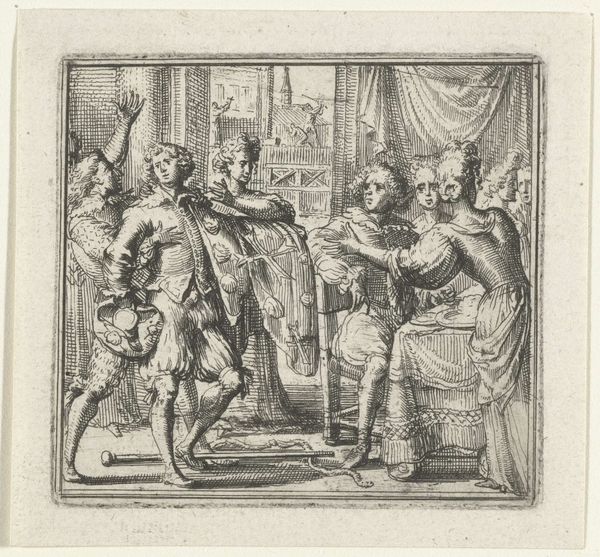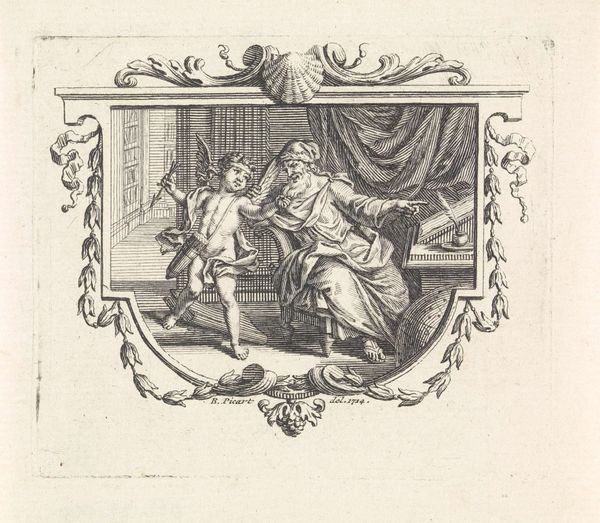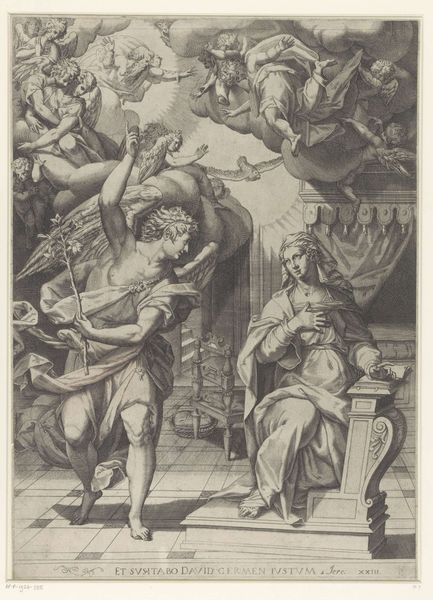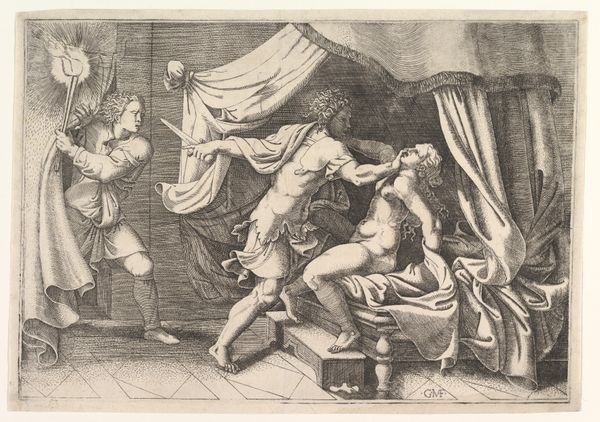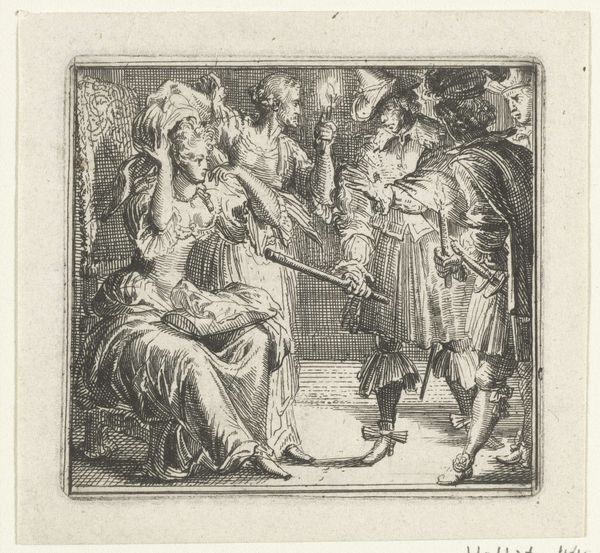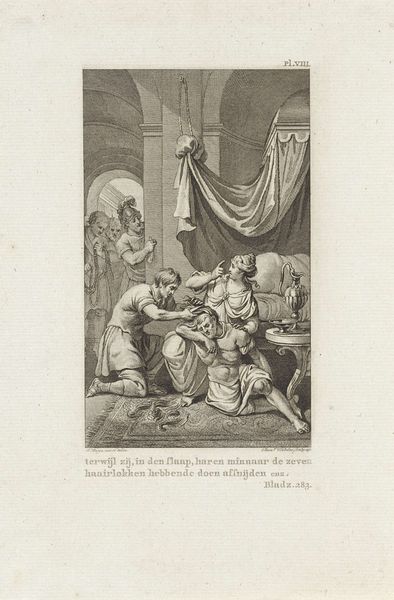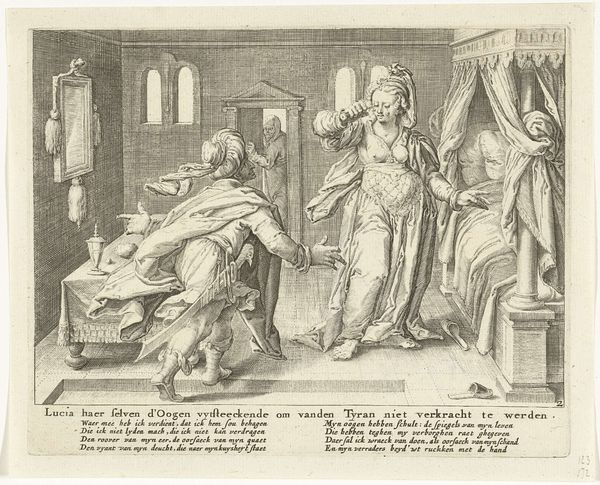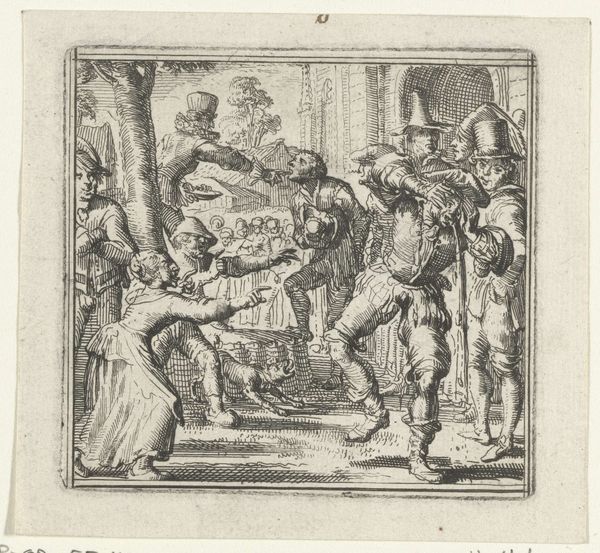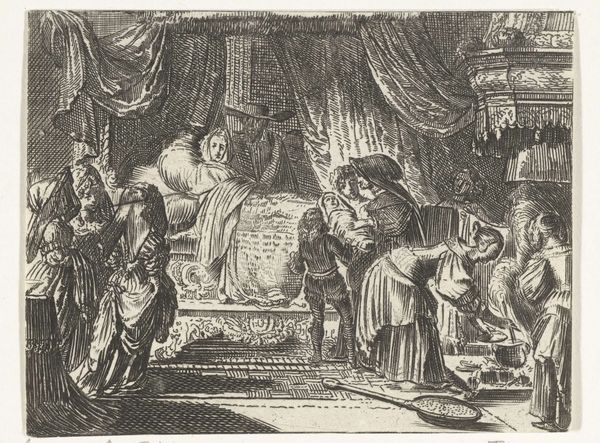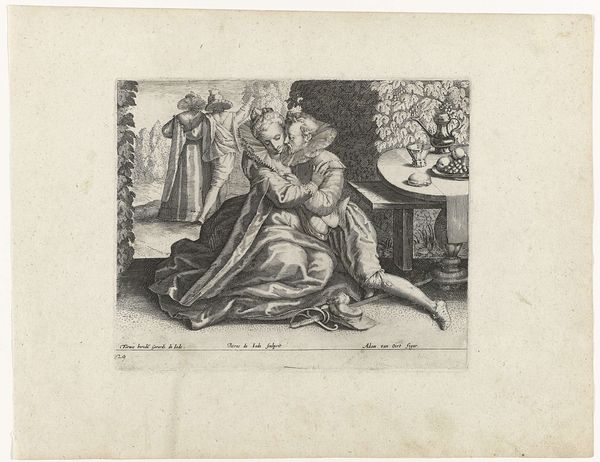
#
light pencil work
#
pen sketch
#
pencil sketch
#
sketch book
#
personal sketchbook
#
pen-ink sketch
#
pen work
#
sketchbook drawing
#
storyboard and sketchbook work
#
sketchbook art
Dimensions: height 104 mm, width 117 mm
Copyright: Rijks Museum: Open Domain
Antonio Tempesta etched "The Rape of Philomela" in the late 16th or early 17th century, capturing a violent scene laden with symbolic weight. Tereus, the aggressor, wears a crown, a symbol of authority twisted into tyranny as he violates Philomela. Notice the bed, a site of violated trust, and the water jug, possibly alluding to cleansing or purity defiled. This scene echoes through time, recalling similar acts depicted in ancient Greek vases and Renaissance paintings, each reiteration serving as a stark reminder of power's abuse. The grasping, desperate gestures of Philomela are particularly evocative. These gestures recur across centuries of art, from antiquity to the Renaissance, each capturing intense emotional states. The motif of the violated woman transcends cultures, evolving yet retaining its primal power. The collective memory of such acts and their representation tap into deep, subconscious fears and moral outrage. This image, like others depicting similar themes, serves as a potent cultural artifact, continuously resurrected and re-examined across history.
Comments
No comments
Be the first to comment and join the conversation on the ultimate creative platform.
